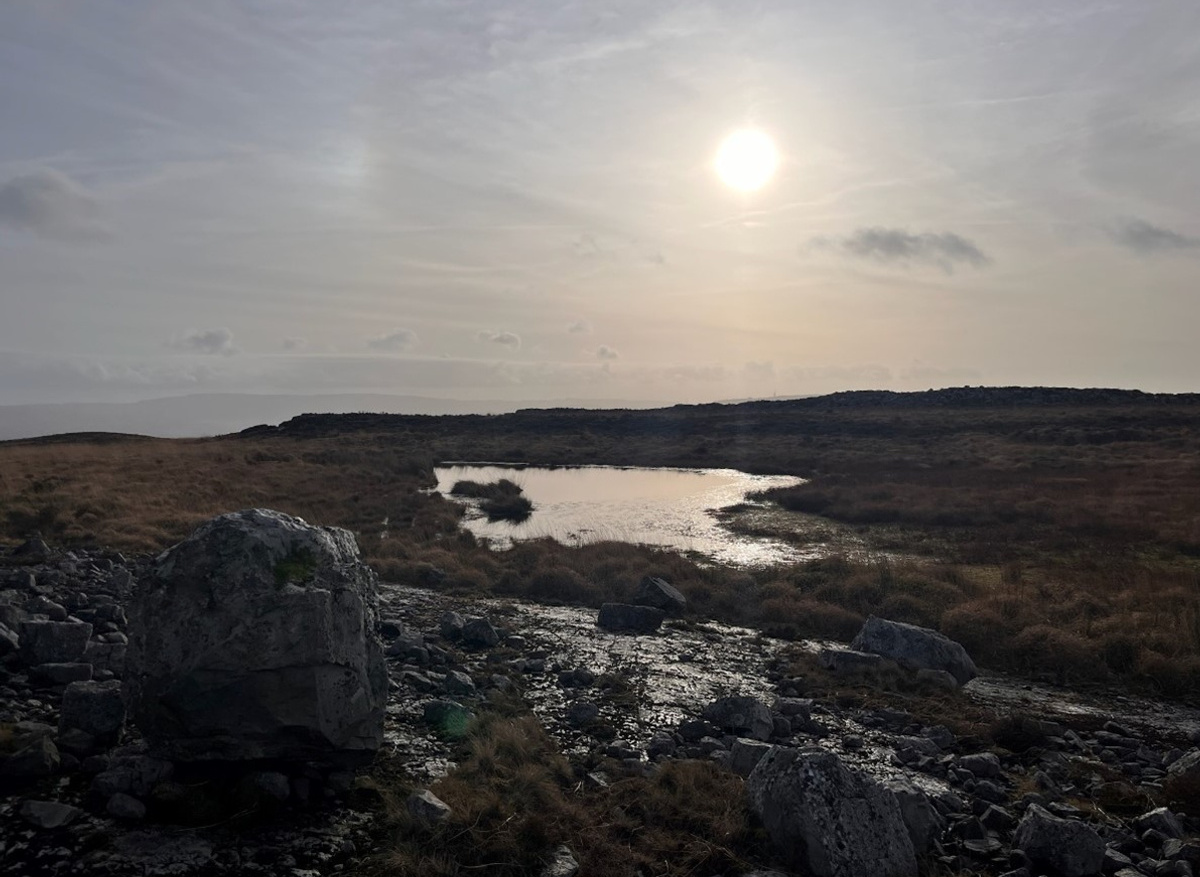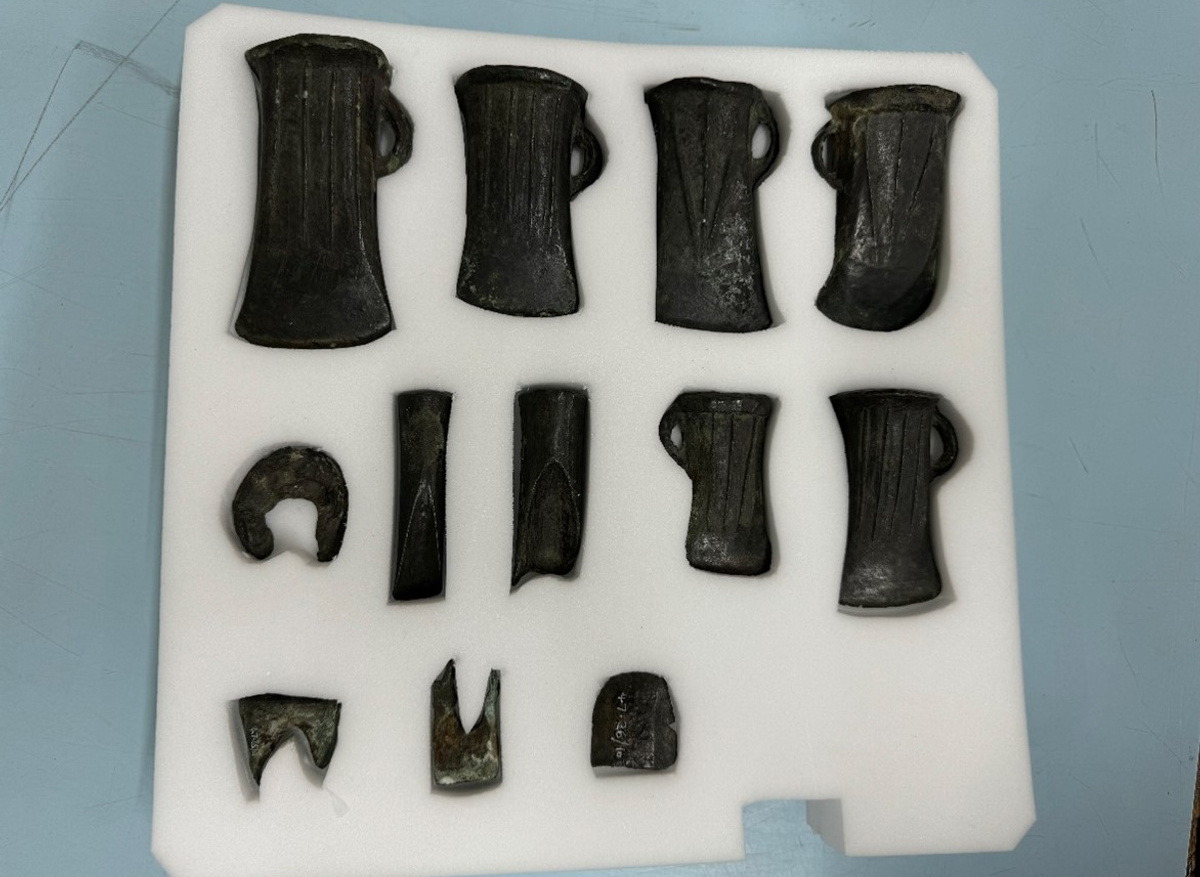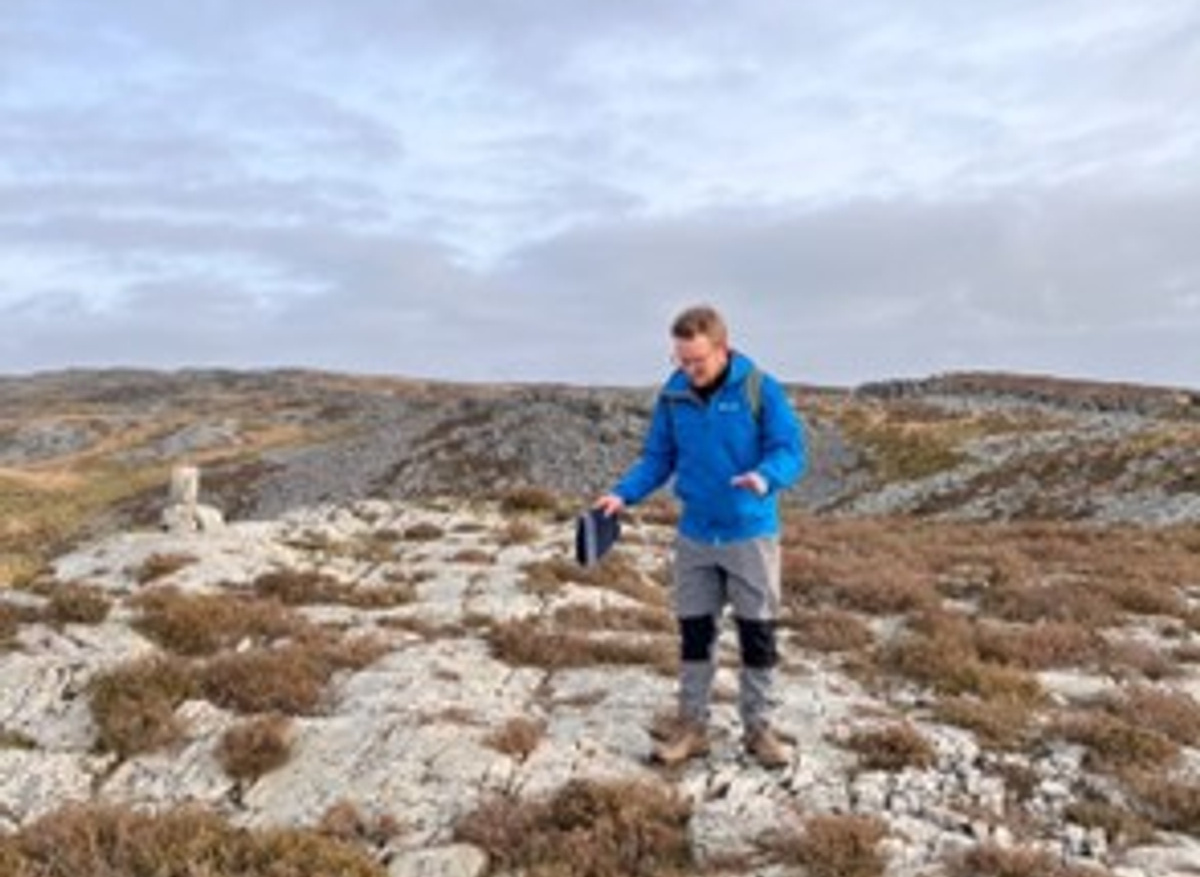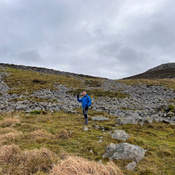My name is Chris Griffiths and I’m a doctoral student with Amgueddfa Cymru – Museum Wales and the University of Reading. As I dive into my fourth and final year, my days are mostly spent fervently writing up the results of my research into Bronze Age hoards in south-east and west Wales. However, every now and then, I escape the clutches of my desk for some good old-fashioned fieldwork.
Recently, I had the chance to visit Penwyllt, Tawe-Uchaf, where a 3,000-year-old hoard of bronze objects was discovered way back in 1886. Imagine the scene: a quite hamlet, a mountain, and a boulder – one of many, as it turns out. These sparse notes were all that was recorded in the original account of the hoard’s discovery, which doesn’t exactly help in locating its precise findspot.
The bronze objects, now housed in the national collection at Amgueddfa Cymru – Museum Wales, offer a tantalising clue. Typically, ancient bronzes buried in dry ground turn green, but the objects from the Penwyllt hoard all have a deep, dark brown patina. This colour change hints at a peaty resting place, suggesting the hoard was buried in a bog.
Despite the many boulders and the expansiveness of the blanket bog across the mountain top, my research has helped to more precisely locate the hoard’s findspot. Anyone who has ever walked across a bog will know how difficult they can be to navigate, and it is very unlikely that the people who buried this hoard intended to return and recover their valuables. It seems more likely that the hoard was buried as a permanent offering, intended for the supernatural deities who were thought to reside in this place.
If you’re ever in the area, there are some fantastic routes that you can walk along through this part of Bannau Brycheiniog National Park. And if you see a slightly bewildered archaeologist among the boulders, feel free to wave. It might just be me, mapping out possible findspots!





